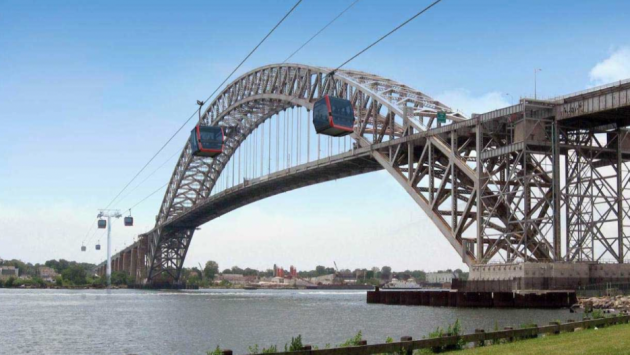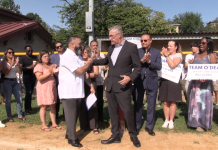In an editorial, Jersey City Business Administrator and Bayonne native John J. Metro lays out why he feels the time is now for a communal aerial gondola between the Peninsula City and Staten Island.

It has been nearly five years since the Staten Island Economic Development Corporation and the City of Bayonne studied the feasibility of installing a communal aerial gondola.
Other than understanding the costs and land acquisition, the aerial gondola that will run parallel to the Bayonne Bridge to transport commuters over the Kill Van Kull has just been words on paper.
With the increasing development on both sides of the bridge and the new federal infrastructure initiatives, it is time to make this concept of transportation a reality to create a new connection between adjoining neighborhoods and harvest future economic development and opportunity.
Once viewed simply as a tool for ski resorts, gondolas are now an alternative mode of urban transportation that have been implemented in cities across the world.
These 21st-century flying streetcars cost between $3 million to $10 million per mile to design and build as compared to $400 million per mile for a subway and $36 million per mile for a light rail.
In addition, the lifts operate entirely on electric power, which enhances regional sustainability efforts, and they constantly run with cars that leave every few seconds or minutes.
The Bayonne gondola trip would take approximately 13 minutes from end to end with 163 ten-person cabins running every 12 seconds and transporting up to 3,000 people per hour.
Ridership on the gondola is projected to range anywhere from 2,800 to 7,600 daily and cost between $4 and $6 per rider. The funding is not yet solidified.
However, the best route is a private–public partnership that asks developers to allocate dedicated dollars and leverages the bipartisan national infrastructure initiatives.
Implementing the gondola will also promote walkable communities. The metropolitan area is one of the highest car congestion districts in the country. Bayonne still requires developers to build parking spots at a minimum ratio of 1:1 per residential unit.
The aerial ropes will encourage residents to get out of their vehicles and walk on both sides of the bay.
Additionally, as new modes of public transportation increase, the city should amend the minimum parking requirements and promote alternative transportation methods, including the bike lanes that have yet to be implemented and the connecting ferry service that has been an undertaking for a few years now.
The Bayline gondola project will be the first project in the region that connects two states in a meaningful way.
John J. Metro is a public policy advocate originally from Bayonne.








